Best of Bertone: greats from the Italian design house
Founded in 1912 and flourishing under the genius of Nuccio Bertone, the Italian design house became known for its bold vision, razor-sharp lines, and fearless innovation. Bertone worked with almost every major carmaker – from Alfa Romeo to Lamborghini – and left behind a portfolio that shaped the direction of global car design across decades. Here’s a few:
Lamborghini Miura (1966)
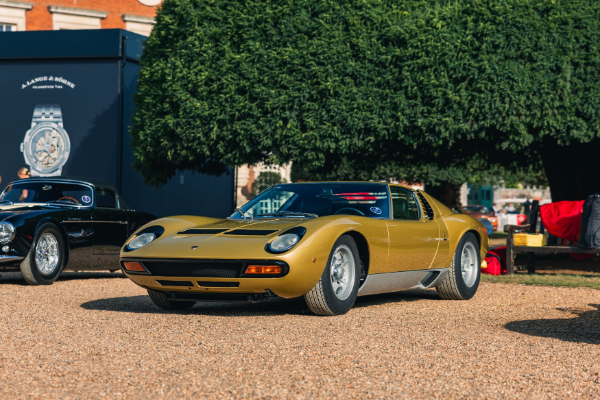
Oh deary me. Time to start fawning and talking about ‘the most beautiful car ever built’ and ‘design genius’ and ‘setting the benchmark’ and even ‘it’s a work of art’, and so on. Right, so now all these over-amplified descriptors are out of the way, let’s get down to business. The simple fact is Lamborghini wanted to build a radical, mid-engined grand tourer. Ok, no issue there – seems reasonable. But when Bertone and designer Marcello Gandini delivered the Miura, the game kind of a changed a bit. It was a ‘blimey, this is a bit special’ moment. The Miura, with its Sophia Loren eyelashes, its low-slung and seductive profile and utterly wonderful lines from front to back was not only glorious, it was futuristic. The design was as bold as its performance. It reinvented sports car design and now has its rightful place in supercar history.
Stratos Zero (1970)
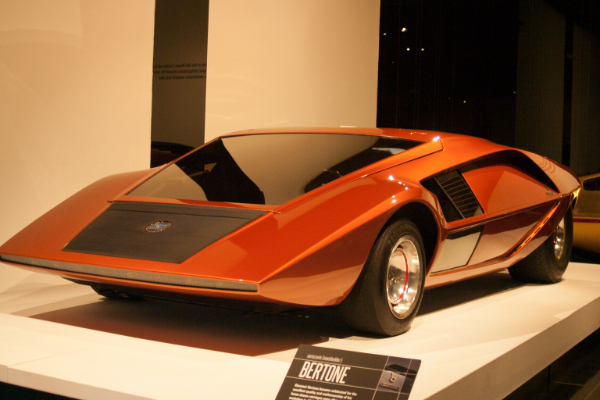
This is, well… it’s a bit weird, but then concept cars are supposed to be. The whole concept thingimabob is to design something bonkers and tone it down a bit for a future production car. The Zero did its job. It was presented at the 1970 Turin Auto Show, predating the introduction of the Stratos HF prototype by one year, and the production Lancia Stratos by three years. It wasn’t built for speed even though it was a flat as a pancake and looked like you’d need posture reduction surgery just to get in it. But comfort and performance were not the priorities: the idea was to blow people’s minds and prompt a ‘What on Earth?...” reaction. For the record, the wedge-shaped Zero sat barely a metre high and, with its canopy-style windscreen, completely flat profile, and entry via the tilting windscreen itself, this one-off concept car was pure sci-fi.
FIAT X1/9 (1972)
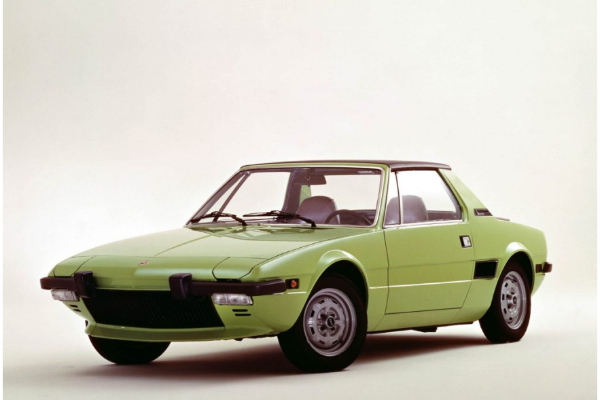
So, um, here’s the wish list: we want a targa top, we want two seats, we want it to be small, we want it to look fast but we don’t necessarily want it to go fast and we want it to be affordable but look expensive. Oh, and we want it to be mid-engined so it has the perfect driving balance. And, if you can possibly make it reliable and not prone to rust, that’ll be lovely too. It is a Fiat after all. Bertone did something special with this car and it laid the groundwork for others such as the Toyota MR2 and the Triumph TR7, all mass-market sportscar wedges that looked rather nice. In creating the X1/9, Bertone brought mid-engine magic to the masses, thanks to clever packaging and creative design. The crisp lines, pop-up headlights, and wedge-shaped profile gave it a distinctly exotic flair - despite its modest engine. Bertone not only designed the X1/9 but also took over production from Fiat in the early 1980s, becoming one of the few design houses to manufacture its own cars. The result was a car that was both fun and forward-thinking, and unreliable.
LAMBORGHINI COUNTACH (1974)
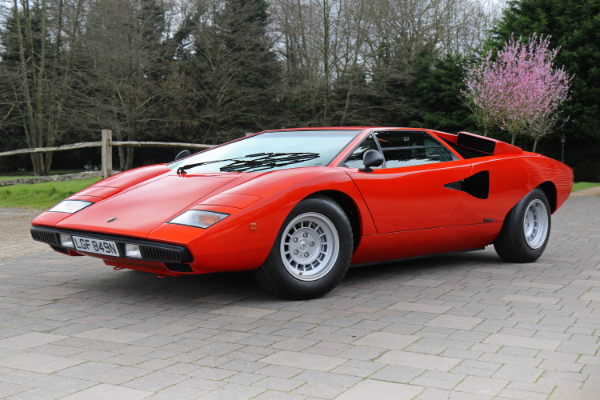
You couldn’t have a Best of Bertone list without including the Lamborghini Countach. It’s mandatory. Of course, it is a car that kept wall-poster companies in business and helped avid players of Top Trumps to take the entire deck, such were the stats, but it’s much more than that. The Countach is bonkers. It’s not a driver’s car – it literally is a pain in the neck to drive, and it’s hideously packaged in terms of being a car for humans to sit in, but if you see one in the street you’ll crane your neck just to get a better view. It’s a car for show-offs who don’t mind the physiotherapy bills. It is fair to say, however, that few cars have defined a decade quite like the Lamborghini Countach. Sharp-edged, brutal, and impossibly low, the Countach made the Miura look tame. With scissor doors, rear air intakes like jet engines, and more drama per inch than any car before it, the Countach became the definitive dream car.
CITROEN BX (1974)
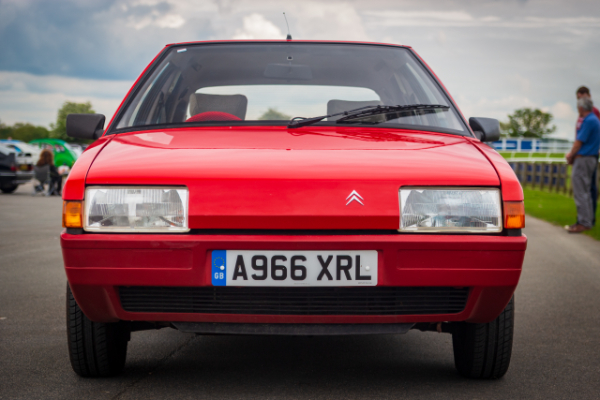
Bertone wasn’t just a supercar and sports car designer, it did ordinary too. And yes, it’s a Citroen and yes, it is an ordinary car that normal people can afford, but Bertone’s stamp is clearly on it. The Citroën BX was a futuristic family car with unmistakable Italian flair. Designed by Bertone's Marc Deschamps, the BX combined Citroën’s hydropneumatic suspension with a lightweight body and stark, geometric lines. It wasn’t traditionally ‘beautiful’, but it was bold, clean, and distinctive, offering a glimpse of modernist design to everyday drivers. Its success helped Citroën recover its footing in the 1980s and brought Bertone’s touch to the masses. Now, if you saw it trundling up the street you might say, ‘that’s an interesting old car’ but there’s no wow moment here. It is what it is – an interesting car.
VOLVO 780 COUPE (1985)

In the 70s and 80s a Volvo was a box, built to last with a focus on safety. They weren’t supposed to look nice. Then the 780, designed by Bertone, sort of turned all that on its head. It was an exclusive, two-door coupe model based on the Volvo 760 but featured unique styling and a luxurious interior. The 780 coupe marked Volvo's return to the two-door coupe market after the 262C. Production of the 780 was handled by Bertone and it was aimed at customers seeking exclusivity, comfort, safety, and good roadholding characteristics. In essence, the Volvo 780 coupe was a luxurious, stylish, and exclusive two-door model that gave the boxy Swedish brand a much-needed dash of class. The 780 retained Volvo’s practicality but added soft lines, a handsome coupe roofline, and premium interiors. It was refined, grown-up, and quietly confident. Though not a big seller, it has earned cult status among Volvo enthusiasts - and showcased Bertone’s ability to elevate even the most conservative of brands.
BERTONE GENESIS (1988)

Um… a five-door Lamborghini minivan with gullwing doors and a V12 engine. Are you mad? Apparently not – Bertone saw fit to appropriate his genius on this rather wonderful, if not left-field creation. This outrageous one-off concept featured a 455hp V12 from the Lamborghini Countach, rear gullwing doors, and seating for five. It was never meant for production - but it perfectly encapsulated Bertone’s fearless philosophy: push boundaries, defy logic, and design without compromise. This concept, using Lamborghini parts, was first displayed to the public at the 1988 Turin Auto Show and they thought it rather lovely. As well the gullwing doors at the front it had sliding doors at the back. It was powered by the same 455 bhp (339 kW) 5.2 V12 engine found in the Lamborghini Countach Quattrovalvole but it didn’t go as fast as the Countach though, mostly because it weighed almost two tons. Inside there was enough seating for five, with two bucket seats in the front, placed over the engine, and three bucket seats in the rear, arranged in a V pattern. The rear two seats featured retractable leg rests that extended from under the seat, while the third rear seat, positioned further forward and in the middle of the other two, could swivel 180 degrees to face backwards, as well as be folded down. Although it was just a design study it is still regarded as a revolution that probably paved the way for the Renault Espace.

COMMENT